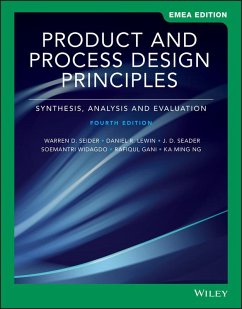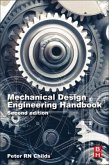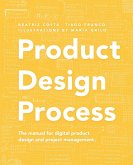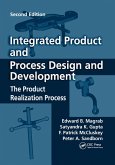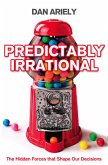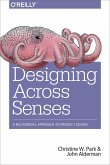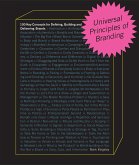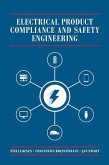Warren D. Seider (University of Pennsylvania), Daniel R. Lewin (the Israel Institute of Technology Technion), J. D. Seader (University of Utah)
Product and Process Design Principles
Synthesis, Analysis, and Evaluation, EMEA Edition
Warren D. Seider (University of Pennsylvania), Daniel R. Lewin (the Israel Institute of Technology Technion), J. D. Seader (University of Utah)
Product and Process Design Principles
Synthesis, Analysis, and Evaluation, EMEA Edition
- Broschiertes Buch
- Merkliste
- Auf die Merkliste
- Bewerten Bewerten
- Teilen
- Produkt teilen
- Produkterinnerung
- Produkterinnerung
The new 4th edition of Seider's Product and Process Design Principles: Synthesis, Analysis and Design covers content for process design courses in the chemical engineering curriculum, showing how process design and product design are inter-linked and why studying the two is important for modern applications. A principal objective of this new edition is to describe modern strategies for the design of chemical products and processes, with an emphasis on a systematic approach. This fourth edition presents two parallel tracks: (1) product design, and (2) process design, with an emphasis on process…mehr
Andere Kunden interessierten sich auch für
![Mechanical Design Engineering Handbook Mechanical Design Engineering Handbook]() Peter ChildsMechanical Design Engineering Handbook139,99 €
Peter ChildsMechanical Design Engineering Handbook139,99 €![Product Design Process Product Design Process]() Tiago FrancoProduct Design Process34,99 €
Tiago FrancoProduct Design Process34,99 €![Integrated Product and Process Design and Development Integrated Product and Process Design and Development]() Edward B. MagrabIntegrated Product and Process Design and Development65,99 €
Edward B. MagrabIntegrated Product and Process Design and Development65,99 €![Predictably Irrational Predictably Irrational]() Dan ArielyPredictably Irrational18,99 €
Dan ArielyPredictably Irrational18,99 €![Designing Across Senses: A Multimodal Approach to Product Design Designing Across Senses: A Multimodal Approach to Product Design]() Christine ParkDesigning Across Senses: A Multimodal Approach to Product Design38,99 €
Christine ParkDesigning Across Senses: A Multimodal Approach to Product Design38,99 €![Universal Principles of Branding Universal Principles of Branding]() Mark KingsleyUniversal Principles of Branding36,99 €
Mark KingsleyUniversal Principles of Branding36,99 €![Electrical Product Compliance and Safety Engineering Electrical Product Compliance and Safety Engineering]() Steli LoznenElectrical Product Compliance and Safety Engineering142,99 €
Steli LoznenElectrical Product Compliance and Safety Engineering142,99 €-
-
-
The new 4th edition of Seider's Product and Process Design Principles: Synthesis, Analysis and Design covers content for process design courses in the chemical engineering curriculum, showing how process design and product design are inter-linked and why studying the two is important for modern applications. A principal objective of this new edition is to describe modern strategies for the design of chemical products and processes, with an emphasis on a systematic approach. This fourth edition presents two parallel tracks: (1) product design, and (2) process design, with an emphasis on process design. Process design instructors can show easily how product designs lead to new chemical processes. Alternatively, product design can be taught in a separate course subsequent to the process design course.
Hinweis: Dieser Artikel kann nur an eine deutsche Lieferadresse ausgeliefert werden.
Hinweis: Dieser Artikel kann nur an eine deutsche Lieferadresse ausgeliefert werden.
Produktdetails
- Produktdetails
- Verlag: John Wiley & Sons Inc
- 4 ed
- Seitenzahl: 784
- Erscheinungstermin: 17. Mai 2019
- Englisch
- Abmessung: 222mm x 279mm x 48mm
- Gewicht: 1876g
- ISBN-13: 9781119588009
- ISBN-10: 1119588006
- Artikelnr.: 56547672
- Herstellerkennzeichnung
- Libri GmbH
- Europaallee 1
- 36244 Bad Hersfeld
- gpsr@libri.de
- Verlag: John Wiley & Sons Inc
- 4 ed
- Seitenzahl: 784
- Erscheinungstermin: 17. Mai 2019
- Englisch
- Abmessung: 222mm x 279mm x 48mm
- Gewicht: 1876g
- ISBN-13: 9781119588009
- ISBN-10: 1119588006
- Artikelnr.: 56547672
- Herstellerkennzeichnung
- Libri GmbH
- Europaallee 1
- 36244 Bad Hersfeld
- gpsr@libri.de
Warren D. Seider is Professor of Chemical Engineering at the University of Pennsylvania. He received a B.S. degree from the Polytechnic Institute of Brooklyn and M.S. and Ph.D. degrees from the University of Michigan. Seider has contributed to the fields of process analysis, simulation, design, and control. He has authored or coauthored over 110 journal articles and authored or edited seven books. He helped to organize the CACHE (Computer Aids for Chemical Engineering Education) Committee in 1969 and served as its chairman. Seider is a member of the Editorial Advisory Board of Computers and Chemical Engineering. Daniel R. Lewin is Professor of Chemical Engineering, the Churchill Family Chair, and the Director of the Process Systems Engineering (PSE) research group at the Technion, the Israel Institute of Technology. He received his B.Sc. from the University of Edinburgh and his D.Sc. from the Technion. He has authored or co-authored over 100 technical publications in the area of process systems engineering, as well as the first three editions of this textbook, and the multimedia CD that accompanies it. J. D. Seader is Professor Emeritus of Chemical Engineering at the University of Utah. He received B.S. and M.S. degrees from the University of California at Berkeley and a Ph.D. from the University of Wisconsin. In 2004, he received, with Professor Warren D. Seider, the Warren K. Lewis Award for Chemical Engineering Education from the AIChE. In 2008, his textbook, "Separation Process Principles" with co-author Ernest J. Henley, was cited as one of 30 ground-breaking books in the last 100 years of chemical engineering. Soemantri Widagdo is a retired R&D executive after a 15-year career at 3M. His last position was the R&D Head of 3M Southeast Asia. He received his B.S. degree in chemical engineering from Bandung Institute of Technology, Indonesia, and his M.Ch.E. and Ph.D. degrees from Stevens Institute of Technology. He has been involved in a variety of technology and product-development programs involving renewable energy, industrial and transportation applications, consumer office products, electrical and electronics applications, health care and dentistry, and display and graphics applications. He has authored and co-authored over 20 technical publications and two patents. Rafiqul Gani is Professor of System Design at the Department of Chemical & Biochemical Engineering, The Technical University of Denmark and the head and co-founder of the Computer Aided Product-Process Engineering Center (CAPEC). He received a B.S degree from the Bangladesh University of Engineering and Technology, and M.S., DIC and Ph.D. degrees from Imperial College, London. He has published more than 200 peer-reviewed journal articles and delivered over 300 lectures, seminars and plenary/keynote lectures at international conferences, institutions and companies all over the world. Professor Gani is currently (2014-2016) the president of the EFCE (European Federation of Chemical Engineering); a member of the Board of Trustees of the AIChE; a Fellow of the AIChE and also a Fellow of IChemE. Ka Ming Ng is Chair Professor of Chemical and Biomolecular Engineering at the Hong Kong University of Science and Technology. He obtained his B.S. degree from the University of Minnesota and his Ph.D. from the University of Houston. His research interests center on product conceptualization, process design and business development involving water, natural herbs, nanomaterials, and advanced materials. He is a fellow of the American Institute of Chemical Engineers where he received the Excellence in Process Development Research Award in 2002.
PART ONE INTRODUCTION TO PRODUCT AND PROCESS DESIGN 1
Chapter 1 Introduction to Chemical Product Design 3
1.0 Objectives 3
1.1 Introduction 3
1.2 The Diversity of Chemical Products 3
1.3 Product Design and Development 7
1.4 Summary 16
References 17
Exercises 17
Chapter 2 Introduction to Process Design 19
2.0 Objectives 19
2.1 Introduction 19
2.2 Experiments 21
2.3 Preliminary Process Synthesis 21
2.4 Next Process Design Tasks 40
2.5 Preliminary Flowsheet Mass Balances 41
2.6 Summary 45
References 45
Exercises 45
Chapter 3 Design Literature, Stimulating Innovation, Energy, Environment,
Sustainability, Safety, Engineering Ethics 47
3.0 Objectives 47
3.1 Design Literature 47
3.2 Stimulating Invention and Innovation 50
3.3 Energy Sources 51
3.4 Environmental Protection 56
3.5 Sustainability 60
3.6 Safety Considerations 63
3.7 Engineering Ethics 70
3.8 Summary 73
References 73
Exercises 74
3S Supplement to Chapter 3-NSPE Code of Ethics (Online
www.wiley.com/college/Seider)
PART TWO DESIGN SYNTHESIS-PRODUCT AND PROCESSES 77
Chapter 4 Molecular and Mixture Design 79
4.0 Objectives 79
4.1 Introduction 79
4.2 Framework for Computer-Aided Molecular-Mixture Design 81
4.3 Case Studies 98
4.4 Summary 107
References 107
Exercises 108
Chapter 5 Design of Chemical Devices, Functional Products, and Formulated
Products 110
5.0 Objectives 110
5.1 Introduction 110
5.2 Design of Chemical Devices and Functional Products 112
5.3 Design of Formulated Products 117
5.4 Design of Processes for B2C Products 123
5.5 Summary 126
References 127
Exercises 127
Chapter 6 Heuristics for Process Synthesis 132
6.0 Objectives 132
6.1 Introduction 133
6.2 Raw Materials and Chemical Reactions 133
6.3 Distribution of Chemicals 135
6.4 Separations 141
6.5 Heat Removal From and Addition to Reactors 145
6.6 Heat Exchangers and Furnaces 148
6.7 Pumping, Compression, Pressure Reduction, Vacuum, and Conveying of
Solids 150
6.8 Changing the Particle Size of Solids and Size Separation of Particles
153
6.9 Removal of Particles From Gases and Liquids 154
6.10 Considerations that Apply to the Entire Flowsheet 154
6.11 Summary 155
References 159
Exercises 160
Chapter 7 Simulation to Assist in Process Creation 162
7.0 Objectives 162
7.1 Introduction 162
7.2 Principles of Process Simulation 163
7.3 Process Creation through Process Simulation 176
7.4 Case Studies 184
7.5 Principles of Batch Flowsheet Simulation 194
7.6 Summary 201
References 202
Exercises 202
Chapter 8 Synthesis of Networks Containing Reactors 209
8.0 Objectives 209
8.1 Introduction 209
8.2 Reactor Models in the Process Simulators 210
8.3 Reactor Network Design Using the Attainable Region 215
8.4 Reactor Design for Complex Configurations 220
8.5 Locating the Separation Section with Respect to the Reactor Section 224
8.6 Trade-Offs in Processes Involving Recycle 227
8.7 Optimal Reactor Conversion 228
8.8 Recycle to Extinction 229
8.9 Snowball Effects in the Control of Processes Involving Recycle 231
8.10 Summary 231
References 232
Exercises 232
Chapter 9 Synthesis of Separation Trains 234
9.0 Objectives 234
9.1 Introduction 234
9.2 Criteria for Selection of Separation Methods 241
9.3 Selection of Equipment 244
9.4 Sequencing of Ordinary Distillation Columns for the Separation of
Nearly Ideal Liquid Mixtures 245
9.5 Sequencing of Operations for the Separation of Nonideal Liquid Mixtures
257
9.6 Separation Systems for Gas Mixtures 277
9.7 Separation Systems for Solid-Fluid Mixtures 279
9.8 Summary 280
References 280
Exercises 282
Chapter 10 Second-Law Analysis 287
10.0 Objectives 287
10.1 Introduction 287
10.2 The System and the Surroundings 289
10.3 Energy Transfer 289
10.4 Thermodynamic Properties 290
10.5 Equations for Second-Law Analysis 295
10.6 Examples of Lost-Work Calculations 297
10.7 Thermodynamic Efficiency 299
10.8 Causes of Lost Work 300
10.9 Three Examples of Second-Law Analysis 300
10.10 Summary 310
References 310
Exercises 310
Chapter 11 Heat and Power Integration 316
11.0 Objectives 316
11.1 Introduction 316
11.2 Minimum Utility Targets 319
11.3 Networks for Maximum Energy Recovery 325
11.4 Minimum Number of Heat Exchangers 329
11.5 Threshold Approach Temperature 334
11.6 Optimum Approach Temperature 336
11.7 Multiple Utilities 337
11.8 Heat-Integrated Reactors and Distillation Trains 342
11.9 Heat Engines and Heat Pumps 348
11.10 Summary 351
Heat Integration Software 351
References 352
Exercises 352
11S-1 Supplements to Chapter 11-MILP and MINLP Applications in HEN
Synthesis (Online www.wiley.com/college/Seider)
11S-1.0 Objectives
11S-1.1 MER Targeting Using Linear Programming (LP)
11S-1.2 MER Design Using Mixed-Integer Linear Programming (MINLP)
11S-1.3 Superstructures for Minimization of Annual Costs
11S-1.4 Case Studies
Case Study 11S-1.1 Optimal Heat-Integration for the ABCDE Process
Case Study 11S-1.2 Optimal Heat-Integration for an Ethylene Plant
11S-1.5 Summary
11S-1.6 References
11S-2 Supplement to Chapter 11-Mass Integration (Online
www.wiley.com/college/Seider)
11S-2.0 Objectives
11S-2.1 Introduction
11S-2.2 Minimum Mass-Separating Agent
11S-2.3 Mass Exchange Networks for Minimum External Area
11S-2.4 Minimum Number of Mass Exchangers
11S-2.5 Advanced Topics
11S-2.6 Summary
11S-2.7 References
Chapter 12 Heat Exchanger Design 358
12.0 Objectives 358
12.1 Introduction 358
12.2 Equipment for Heat Exchange 363
12.3 Heat-Transfer Coefficients and Pressure Drop 375
12.4 Design of Shell-and-Tube Heat Exchangers 380
12.5 Summary 384
References 384
Exercises 384
Chapter 13 Separation Tower Design 386
13.0 Objectives 386
13.1 Operating Conditions 386
13.2 Fenske-Underwood-Gilliland (FUG) Shortcut Method for Ordinary
Distillation 387
13.3 Kremser Shortcut Method for Absorption and Stripping 388
13.4 Rigorous Multicomponent, Multiequilibrium-Stage Methods with a
Simulator 389
13.5 Plate Efficiency and HETP 391
13.6 Tower Diameter 392
13.7 Pressure Drop and Weeping 393
13.8 Summary 395
References 395
Exercises 396
Chapter 14 Pumps, Compressors, and Expanders 397
14.0 Objectives 397
14.1 Pumps 397
14.2 Compressors and Expanders 401
14.3 Summary 403
References 404
Exercises 404
Chapter 15 Chemical Reactor Design 405
15.0 Objectives 405
15.1 Introduction 405
15.2 Limiting Approximate Models for Tubular Reactors 405
15.3 The COMSOL CFD Package 407
15.4 CFD for Tubular Reactor Models 410
15.5 Nonisothermal Tubular Reactor Models 418
15.6 Mixing in Stirred-Tank Reactors 423
15.7 Summary 424
References 425
Exercises 425
Chapter 16 Cost Accounting and Capital Cost Estimation 426
16.0 Objectives 426
16.1 Accounting 426
16.2 Cost Indexes and Capital Investment 434
16.3 Capital Investment Costs 438
16.4 Estimation of the Total Capital Investment 444
16.5 Purchase Costs of the Most Widely Used Process Equipment 449
16.6 Purchase Costs of Other Chemical Processing Equipment 470
16.7 Equipment Costing Spreadsheet 486
16.8 Equipment Sizing and Capital Cost Estimation Using Aspen Process
Economic Analyzer (APEA) 486
16.9 Summary 493
References 493
Exercises 494
Chapter 17 Annual Costs, Earnings, and Profitability Analysis 498
17.0 Objectives 498
17.1 Introduction 498
17.2 Annual Sales Revenues, Production Costs, and the Cost Sheet 499
17.3 Working Capital and Total Capital Investment 509
17.4 Approximate Profitability Measures 510
17.5 Time Value of Money 513
17.6 Cash Flow and Depreciation 520
17.7 Rigorous Profitability Measures 525
17.8 Profitability Analysis Spreadsheet 529
17.9 Summary 545
References 546
Exercises 546
PART THREE DESIGN ANALYSIS-PRODUCT AND PROCESS 551
Chapter 18 Six-Sigma Design Strategies 553
18.0 Objectives 553
18.1 Introduction 553
18.2 Six-Sigma Methodology in Product Design and Manufacturing 553
18.3 Example Applications 557
18.4 Summary 564
References 564
Exercises 565
18S Supplement to Chapter 18 (Online www.wiley.com/college/Seider)
18S.1 Penicillin Fermenter Model
18S.2 Reactive Extraction and Re-extraction Model
References
Chapter 19 Business Decision Making in Product Development 566
19.0 Objectives 566
19.1 Introduction 566
19.2 Economic Analysis 566
19.3 Make-or-Buy Decisions 570
19.4 Microeconomics of Product Development 572
19.5 Company and Societal Factors Affecting Product Development 573
19.6 Summary 574
References 575
Exercises 575
Chapter 20 Plantwide Controllability Assessment 576
20.0 Objectives 576
20.1 Introduction 576
20.2 Control System Configuration 579
20.3 Qualitative Plantwide Control System Synthesis 584
20.4 Summary 590
References 590
Exercises 591
20S Supplement to Chapter 20 (Online www.wiley.com/college/Seider)
20S.0 Objectives
20S.1 Generation of Linear Models in Standard Forms
20S.2 Quantitative Measures for Controllability and Resiliency
20S.3 Towards Automated Flowsheet C&R Diagnosis
20S.4 Control Loop Definition and Tuning
20S.5 Case Studies
Case Study 20S.1 Exothermic Reactor Design for the Production of Propylene
Glycol
Case Study 20S.2 Two Alternative Heat Exchanger Networks
Case Study 20S.3 Interaction of design and Control in the MCB Separation
Process
20S.6 MATLAB for C&R Analysis
20S.7 Summary
References
Exercises
Chapter 21 Design Optimization 597
21.0 Objectives 597
21.1 Introduction 597
21.2 General Formulation of the Optimization Problem 598
21.3 Classification of Optimization Problems 599
21.4 Linear Programming (LP) 601
21.5 Nonlinear Programming (NLP) with a Single Variable 603
21.6 Conditions for Nonlinear Programming (NLP) by Gradient Methods with
Two or More Decision Variables 605
21.7 Optimization Algorithm 607
21.8 Flowsheet Optimizations-Case Studies 609
21.9 Summary 611
References 612
Exercises 612
Chapter 22 Optimal Design and Scheduling of Batch Processes 616
22.0 Objectives 616
22.1 Introduction 616
22.2 Design of Batch Process Units 617
22.3 Design of Reactor-Separator Processes 620
22.4 Design of Single-product Processing Sequences 622
22.5 Design on Multiproduct Processing Sequences 625
22.6 Summary 626
References 626
Exercises 627
PART FOUR DESIGN REPORTS-PRODUCT AND PROCESS 629
Chapter 23 Written Reports and Oral Presentations 631
23.0 Objectives 631
23.1 Contents of the Written Report 632
23.2 Preparation of the Written Report 636
23.3 Oral Design Presentations 638
23.4 Award Competition 641
23.5 Summary 641
References 641
PART FIVE CASE STUDIES-PRODUCT AND PROCESS DESIGNS 643
Chapter 24 Case Study 1-Home Hemodialysis Devices 645
24.0 Objectives 645
24.1 Hemodialysis Technology 645
24.2 Design Specifications of Home Hemodialysis Device 652
24.3 Summary 655
References 655
Bibliography Patents-Hemodialysis Devices-General 655
Patents-Hemodialysis Devices-Hollow-Fiber Membranes 656
Patents-Hemodialysis Devices-Dialysate Regeneration 656
Patents-Hemodialysis Devices-Alarms/User Interface 656
Exercises 656
Chapter 25 Case Study 2-High Throughput Screening Devices for Kinase
Inhibitors 657
25.0 Objectives 657
25.1 Background Technology For High Throughput Screening of
Kinase Inhibitors 657
25.2 Product Concept 665
25.3 Prototyping 669
25.4 Product Development 672
25.5 Summary 672
References 672
Patents 673
Exercises 673
Chapter 26 Case Study 3-Die Attach Adhesive: A Case Study of Product
Development 674
26.0 Objectives 674
26.1 Background of Technology 674
26.2 Market Study 674
26.3 Product Design 677
26.4 Process Design 678
26.5 Prototyping 678
26.6 Estimation of Product Cost 679
26.7 Summary 680
References 680
Exercises 681
Chapter 27 Case Study 4-Ammonia Process 683
27.0 Objectives 683
27.1 Introduction 683
27.2 Initial Base Case Design 686
27.3 Design Refinement 692
Postscript 699
References 703
Exercises 703
APPENDICES
I. Residue Curves for Heterogeneous Systems 704
II. Design Problem Statements by Area 705
III. Materials of Construction 709
INDICES
Table of Acronyms 711
Author Index 719
Subject Index 725
Chapter 1 Introduction to Chemical Product Design 3
1.0 Objectives 3
1.1 Introduction 3
1.2 The Diversity of Chemical Products 3
1.3 Product Design and Development 7
1.4 Summary 16
References 17
Exercises 17
Chapter 2 Introduction to Process Design 19
2.0 Objectives 19
2.1 Introduction 19
2.2 Experiments 21
2.3 Preliminary Process Synthesis 21
2.4 Next Process Design Tasks 40
2.5 Preliminary Flowsheet Mass Balances 41
2.6 Summary 45
References 45
Exercises 45
Chapter 3 Design Literature, Stimulating Innovation, Energy, Environment,
Sustainability, Safety, Engineering Ethics 47
3.0 Objectives 47
3.1 Design Literature 47
3.2 Stimulating Invention and Innovation 50
3.3 Energy Sources 51
3.4 Environmental Protection 56
3.5 Sustainability 60
3.6 Safety Considerations 63
3.7 Engineering Ethics 70
3.8 Summary 73
References 73
Exercises 74
3S Supplement to Chapter 3-NSPE Code of Ethics (Online
www.wiley.com/college/Seider)
PART TWO DESIGN SYNTHESIS-PRODUCT AND PROCESSES 77
Chapter 4 Molecular and Mixture Design 79
4.0 Objectives 79
4.1 Introduction 79
4.2 Framework for Computer-Aided Molecular-Mixture Design 81
4.3 Case Studies 98
4.4 Summary 107
References 107
Exercises 108
Chapter 5 Design of Chemical Devices, Functional Products, and Formulated
Products 110
5.0 Objectives 110
5.1 Introduction 110
5.2 Design of Chemical Devices and Functional Products 112
5.3 Design of Formulated Products 117
5.4 Design of Processes for B2C Products 123
5.5 Summary 126
References 127
Exercises 127
Chapter 6 Heuristics for Process Synthesis 132
6.0 Objectives 132
6.1 Introduction 133
6.2 Raw Materials and Chemical Reactions 133
6.3 Distribution of Chemicals 135
6.4 Separations 141
6.5 Heat Removal From and Addition to Reactors 145
6.6 Heat Exchangers and Furnaces 148
6.7 Pumping, Compression, Pressure Reduction, Vacuum, and Conveying of
Solids 150
6.8 Changing the Particle Size of Solids and Size Separation of Particles
153
6.9 Removal of Particles From Gases and Liquids 154
6.10 Considerations that Apply to the Entire Flowsheet 154
6.11 Summary 155
References 159
Exercises 160
Chapter 7 Simulation to Assist in Process Creation 162
7.0 Objectives 162
7.1 Introduction 162
7.2 Principles of Process Simulation 163
7.3 Process Creation through Process Simulation 176
7.4 Case Studies 184
7.5 Principles of Batch Flowsheet Simulation 194
7.6 Summary 201
References 202
Exercises 202
Chapter 8 Synthesis of Networks Containing Reactors 209
8.0 Objectives 209
8.1 Introduction 209
8.2 Reactor Models in the Process Simulators 210
8.3 Reactor Network Design Using the Attainable Region 215
8.4 Reactor Design for Complex Configurations 220
8.5 Locating the Separation Section with Respect to the Reactor Section 224
8.6 Trade-Offs in Processes Involving Recycle 227
8.7 Optimal Reactor Conversion 228
8.8 Recycle to Extinction 229
8.9 Snowball Effects in the Control of Processes Involving Recycle 231
8.10 Summary 231
References 232
Exercises 232
Chapter 9 Synthesis of Separation Trains 234
9.0 Objectives 234
9.1 Introduction 234
9.2 Criteria for Selection of Separation Methods 241
9.3 Selection of Equipment 244
9.4 Sequencing of Ordinary Distillation Columns for the Separation of
Nearly Ideal Liquid Mixtures 245
9.5 Sequencing of Operations for the Separation of Nonideal Liquid Mixtures
257
9.6 Separation Systems for Gas Mixtures 277
9.7 Separation Systems for Solid-Fluid Mixtures 279
9.8 Summary 280
References 280
Exercises 282
Chapter 10 Second-Law Analysis 287
10.0 Objectives 287
10.1 Introduction 287
10.2 The System and the Surroundings 289
10.3 Energy Transfer 289
10.4 Thermodynamic Properties 290
10.5 Equations for Second-Law Analysis 295
10.6 Examples of Lost-Work Calculations 297
10.7 Thermodynamic Efficiency 299
10.8 Causes of Lost Work 300
10.9 Three Examples of Second-Law Analysis 300
10.10 Summary 310
References 310
Exercises 310
Chapter 11 Heat and Power Integration 316
11.0 Objectives 316
11.1 Introduction 316
11.2 Minimum Utility Targets 319
11.3 Networks for Maximum Energy Recovery 325
11.4 Minimum Number of Heat Exchangers 329
11.5 Threshold Approach Temperature 334
11.6 Optimum Approach Temperature 336
11.7 Multiple Utilities 337
11.8 Heat-Integrated Reactors and Distillation Trains 342
11.9 Heat Engines and Heat Pumps 348
11.10 Summary 351
Heat Integration Software 351
References 352
Exercises 352
11S-1 Supplements to Chapter 11-MILP and MINLP Applications in HEN
Synthesis (Online www.wiley.com/college/Seider)
11S-1.0 Objectives
11S-1.1 MER Targeting Using Linear Programming (LP)
11S-1.2 MER Design Using Mixed-Integer Linear Programming (MINLP)
11S-1.3 Superstructures for Minimization of Annual Costs
11S-1.4 Case Studies
Case Study 11S-1.1 Optimal Heat-Integration for the ABCDE Process
Case Study 11S-1.2 Optimal Heat-Integration for an Ethylene Plant
11S-1.5 Summary
11S-1.6 References
11S-2 Supplement to Chapter 11-Mass Integration (Online
www.wiley.com/college/Seider)
11S-2.0 Objectives
11S-2.1 Introduction
11S-2.2 Minimum Mass-Separating Agent
11S-2.3 Mass Exchange Networks for Minimum External Area
11S-2.4 Minimum Number of Mass Exchangers
11S-2.5 Advanced Topics
11S-2.6 Summary
11S-2.7 References
Chapter 12 Heat Exchanger Design 358
12.0 Objectives 358
12.1 Introduction 358
12.2 Equipment for Heat Exchange 363
12.3 Heat-Transfer Coefficients and Pressure Drop 375
12.4 Design of Shell-and-Tube Heat Exchangers 380
12.5 Summary 384
References 384
Exercises 384
Chapter 13 Separation Tower Design 386
13.0 Objectives 386
13.1 Operating Conditions 386
13.2 Fenske-Underwood-Gilliland (FUG) Shortcut Method for Ordinary
Distillation 387
13.3 Kremser Shortcut Method for Absorption and Stripping 388
13.4 Rigorous Multicomponent, Multiequilibrium-Stage Methods with a
Simulator 389
13.5 Plate Efficiency and HETP 391
13.6 Tower Diameter 392
13.7 Pressure Drop and Weeping 393
13.8 Summary 395
References 395
Exercises 396
Chapter 14 Pumps, Compressors, and Expanders 397
14.0 Objectives 397
14.1 Pumps 397
14.2 Compressors and Expanders 401
14.3 Summary 403
References 404
Exercises 404
Chapter 15 Chemical Reactor Design 405
15.0 Objectives 405
15.1 Introduction 405
15.2 Limiting Approximate Models for Tubular Reactors 405
15.3 The COMSOL CFD Package 407
15.4 CFD for Tubular Reactor Models 410
15.5 Nonisothermal Tubular Reactor Models 418
15.6 Mixing in Stirred-Tank Reactors 423
15.7 Summary 424
References 425
Exercises 425
Chapter 16 Cost Accounting and Capital Cost Estimation 426
16.0 Objectives 426
16.1 Accounting 426
16.2 Cost Indexes and Capital Investment 434
16.3 Capital Investment Costs 438
16.4 Estimation of the Total Capital Investment 444
16.5 Purchase Costs of the Most Widely Used Process Equipment 449
16.6 Purchase Costs of Other Chemical Processing Equipment 470
16.7 Equipment Costing Spreadsheet 486
16.8 Equipment Sizing and Capital Cost Estimation Using Aspen Process
Economic Analyzer (APEA) 486
16.9 Summary 493
References 493
Exercises 494
Chapter 17 Annual Costs, Earnings, and Profitability Analysis 498
17.0 Objectives 498
17.1 Introduction 498
17.2 Annual Sales Revenues, Production Costs, and the Cost Sheet 499
17.3 Working Capital and Total Capital Investment 509
17.4 Approximate Profitability Measures 510
17.5 Time Value of Money 513
17.6 Cash Flow and Depreciation 520
17.7 Rigorous Profitability Measures 525
17.8 Profitability Analysis Spreadsheet 529
17.9 Summary 545
References 546
Exercises 546
PART THREE DESIGN ANALYSIS-PRODUCT AND PROCESS 551
Chapter 18 Six-Sigma Design Strategies 553
18.0 Objectives 553
18.1 Introduction 553
18.2 Six-Sigma Methodology in Product Design and Manufacturing 553
18.3 Example Applications 557
18.4 Summary 564
References 564
Exercises 565
18S Supplement to Chapter 18 (Online www.wiley.com/college/Seider)
18S.1 Penicillin Fermenter Model
18S.2 Reactive Extraction and Re-extraction Model
References
Chapter 19 Business Decision Making in Product Development 566
19.0 Objectives 566
19.1 Introduction 566
19.2 Economic Analysis 566
19.3 Make-or-Buy Decisions 570
19.4 Microeconomics of Product Development 572
19.5 Company and Societal Factors Affecting Product Development 573
19.6 Summary 574
References 575
Exercises 575
Chapter 20 Plantwide Controllability Assessment 576
20.0 Objectives 576
20.1 Introduction 576
20.2 Control System Configuration 579
20.3 Qualitative Plantwide Control System Synthesis 584
20.4 Summary 590
References 590
Exercises 591
20S Supplement to Chapter 20 (Online www.wiley.com/college/Seider)
20S.0 Objectives
20S.1 Generation of Linear Models in Standard Forms
20S.2 Quantitative Measures for Controllability and Resiliency
20S.3 Towards Automated Flowsheet C&R Diagnosis
20S.4 Control Loop Definition and Tuning
20S.5 Case Studies
Case Study 20S.1 Exothermic Reactor Design for the Production of Propylene
Glycol
Case Study 20S.2 Two Alternative Heat Exchanger Networks
Case Study 20S.3 Interaction of design and Control in the MCB Separation
Process
20S.6 MATLAB for C&R Analysis
20S.7 Summary
References
Exercises
Chapter 21 Design Optimization 597
21.0 Objectives 597
21.1 Introduction 597
21.2 General Formulation of the Optimization Problem 598
21.3 Classification of Optimization Problems 599
21.4 Linear Programming (LP) 601
21.5 Nonlinear Programming (NLP) with a Single Variable 603
21.6 Conditions for Nonlinear Programming (NLP) by Gradient Methods with
Two or More Decision Variables 605
21.7 Optimization Algorithm 607
21.8 Flowsheet Optimizations-Case Studies 609
21.9 Summary 611
References 612
Exercises 612
Chapter 22 Optimal Design and Scheduling of Batch Processes 616
22.0 Objectives 616
22.1 Introduction 616
22.2 Design of Batch Process Units 617
22.3 Design of Reactor-Separator Processes 620
22.4 Design of Single-product Processing Sequences 622
22.5 Design on Multiproduct Processing Sequences 625
22.6 Summary 626
References 626
Exercises 627
PART FOUR DESIGN REPORTS-PRODUCT AND PROCESS 629
Chapter 23 Written Reports and Oral Presentations 631
23.0 Objectives 631
23.1 Contents of the Written Report 632
23.2 Preparation of the Written Report 636
23.3 Oral Design Presentations 638
23.4 Award Competition 641
23.5 Summary 641
References 641
PART FIVE CASE STUDIES-PRODUCT AND PROCESS DESIGNS 643
Chapter 24 Case Study 1-Home Hemodialysis Devices 645
24.0 Objectives 645
24.1 Hemodialysis Technology 645
24.2 Design Specifications of Home Hemodialysis Device 652
24.3 Summary 655
References 655
Bibliography Patents-Hemodialysis Devices-General 655
Patents-Hemodialysis Devices-Hollow-Fiber Membranes 656
Patents-Hemodialysis Devices-Dialysate Regeneration 656
Patents-Hemodialysis Devices-Alarms/User Interface 656
Exercises 656
Chapter 25 Case Study 2-High Throughput Screening Devices for Kinase
Inhibitors 657
25.0 Objectives 657
25.1 Background Technology For High Throughput Screening of
Kinase Inhibitors 657
25.2 Product Concept 665
25.3 Prototyping 669
25.4 Product Development 672
25.5 Summary 672
References 672
Patents 673
Exercises 673
Chapter 26 Case Study 3-Die Attach Adhesive: A Case Study of Product
Development 674
26.0 Objectives 674
26.1 Background of Technology 674
26.2 Market Study 674
26.3 Product Design 677
26.4 Process Design 678
26.5 Prototyping 678
26.6 Estimation of Product Cost 679
26.7 Summary 680
References 680
Exercises 681
Chapter 27 Case Study 4-Ammonia Process 683
27.0 Objectives 683
27.1 Introduction 683
27.2 Initial Base Case Design 686
27.3 Design Refinement 692
Postscript 699
References 703
Exercises 703
APPENDICES
I. Residue Curves for Heterogeneous Systems 704
II. Design Problem Statements by Area 705
III. Materials of Construction 709
INDICES
Table of Acronyms 711
Author Index 719
Subject Index 725
PART ONE INTRODUCTION TO PRODUCT AND PROCESS DESIGN 1
Chapter 1 Introduction to Chemical Product Design 3
1.0 Objectives 3
1.1 Introduction 3
1.2 The Diversity of Chemical Products 3
1.3 Product Design and Development 7
1.4 Summary 16
References 17
Exercises 17
Chapter 2 Introduction to Process Design 19
2.0 Objectives 19
2.1 Introduction 19
2.2 Experiments 21
2.3 Preliminary Process Synthesis 21
2.4 Next Process Design Tasks 40
2.5 Preliminary Flowsheet Mass Balances 41
2.6 Summary 45
References 45
Exercises 45
Chapter 3 Design Literature, Stimulating Innovation, Energy, Environment,
Sustainability, Safety, Engineering Ethics 47
3.0 Objectives 47
3.1 Design Literature 47
3.2 Stimulating Invention and Innovation 50
3.3 Energy Sources 51
3.4 Environmental Protection 56
3.5 Sustainability 60
3.6 Safety Considerations 63
3.7 Engineering Ethics 70
3.8 Summary 73
References 73
Exercises 74
3S Supplement to Chapter 3-NSPE Code of Ethics (Online
www.wiley.com/college/Seider)
PART TWO DESIGN SYNTHESIS-PRODUCT AND PROCESSES 77
Chapter 4 Molecular and Mixture Design 79
4.0 Objectives 79
4.1 Introduction 79
4.2 Framework for Computer-Aided Molecular-Mixture Design 81
4.3 Case Studies 98
4.4 Summary 107
References 107
Exercises 108
Chapter 5 Design of Chemical Devices, Functional Products, and Formulated
Products 110
5.0 Objectives 110
5.1 Introduction 110
5.2 Design of Chemical Devices and Functional Products 112
5.3 Design of Formulated Products 117
5.4 Design of Processes for B2C Products 123
5.5 Summary 126
References 127
Exercises 127
Chapter 6 Heuristics for Process Synthesis 132
6.0 Objectives 132
6.1 Introduction 133
6.2 Raw Materials and Chemical Reactions 133
6.3 Distribution of Chemicals 135
6.4 Separations 141
6.5 Heat Removal From and Addition to Reactors 145
6.6 Heat Exchangers and Furnaces 148
6.7 Pumping, Compression, Pressure Reduction, Vacuum, and Conveying of
Solids 150
6.8 Changing the Particle Size of Solids and Size Separation of Particles
153
6.9 Removal of Particles From Gases and Liquids 154
6.10 Considerations that Apply to the Entire Flowsheet 154
6.11 Summary 155
References 159
Exercises 160
Chapter 7 Simulation to Assist in Process Creation 162
7.0 Objectives 162
7.1 Introduction 162
7.2 Principles of Process Simulation 163
7.3 Process Creation through Process Simulation 176
7.4 Case Studies 184
7.5 Principles of Batch Flowsheet Simulation 194
7.6 Summary 201
References 202
Exercises 202
Chapter 8 Synthesis of Networks Containing Reactors 209
8.0 Objectives 209
8.1 Introduction 209
8.2 Reactor Models in the Process Simulators 210
8.3 Reactor Network Design Using the Attainable Region 215
8.4 Reactor Design for Complex Configurations 220
8.5 Locating the Separation Section with Respect to the Reactor Section 224
8.6 Trade-Offs in Processes Involving Recycle 227
8.7 Optimal Reactor Conversion 228
8.8 Recycle to Extinction 229
8.9 Snowball Effects in the Control of Processes Involving Recycle 231
8.10 Summary 231
References 232
Exercises 232
Chapter 9 Synthesis of Separation Trains 234
9.0 Objectives 234
9.1 Introduction 234
9.2 Criteria for Selection of Separation Methods 241
9.3 Selection of Equipment 244
9.4 Sequencing of Ordinary Distillation Columns for the Separation of
Nearly Ideal Liquid Mixtures 245
9.5 Sequencing of Operations for the Separation of Nonideal Liquid Mixtures
257
9.6 Separation Systems for Gas Mixtures 277
9.7 Separation Systems for Solid-Fluid Mixtures 279
9.8 Summary 280
References 280
Exercises 282
Chapter 10 Second-Law Analysis 287
10.0 Objectives 287
10.1 Introduction 287
10.2 The System and the Surroundings 289
10.3 Energy Transfer 289
10.4 Thermodynamic Properties 290
10.5 Equations for Second-Law Analysis 295
10.6 Examples of Lost-Work Calculations 297
10.7 Thermodynamic Efficiency 299
10.8 Causes of Lost Work 300
10.9 Three Examples of Second-Law Analysis 300
10.10 Summary 310
References 310
Exercises 310
Chapter 11 Heat and Power Integration 316
11.0 Objectives 316
11.1 Introduction 316
11.2 Minimum Utility Targets 319
11.3 Networks for Maximum Energy Recovery 325
11.4 Minimum Number of Heat Exchangers 329
11.5 Threshold Approach Temperature 334
11.6 Optimum Approach Temperature 336
11.7 Multiple Utilities 337
11.8 Heat-Integrated Reactors and Distillation Trains 342
11.9 Heat Engines and Heat Pumps 348
11.10 Summary 351
Heat Integration Software 351
References 352
Exercises 352
11S-1 Supplements to Chapter 11-MILP and MINLP Applications in HEN
Synthesis (Online www.wiley.com/college/Seider)
11S-1.0 Objectives
11S-1.1 MER Targeting Using Linear Programming (LP)
11S-1.2 MER Design Using Mixed-Integer Linear Programming (MINLP)
11S-1.3 Superstructures for Minimization of Annual Costs
11S-1.4 Case Studies
Case Study 11S-1.1 Optimal Heat-Integration for the ABCDE Process
Case Study 11S-1.2 Optimal Heat-Integration for an Ethylene Plant
11S-1.5 Summary
11S-1.6 References
11S-2 Supplement to Chapter 11-Mass Integration (Online
www.wiley.com/college/Seider)
11S-2.0 Objectives
11S-2.1 Introduction
11S-2.2 Minimum Mass-Separating Agent
11S-2.3 Mass Exchange Networks for Minimum External Area
11S-2.4 Minimum Number of Mass Exchangers
11S-2.5 Advanced Topics
11S-2.6 Summary
11S-2.7 References
Chapter 12 Heat Exchanger Design 358
12.0 Objectives 358
12.1 Introduction 358
12.2 Equipment for Heat Exchange 363
12.3 Heat-Transfer Coefficients and Pressure Drop 375
12.4 Design of Shell-and-Tube Heat Exchangers 380
12.5 Summary 384
References 384
Exercises 384
Chapter 13 Separation Tower Design 386
13.0 Objectives 386
13.1 Operating Conditions 386
13.2 Fenske-Underwood-Gilliland (FUG) Shortcut Method for Ordinary
Distillation 387
13.3 Kremser Shortcut Method for Absorption and Stripping 388
13.4 Rigorous Multicomponent, Multiequilibrium-Stage Methods with a
Simulator 389
13.5 Plate Efficiency and HETP 391
13.6 Tower Diameter 392
13.7 Pressure Drop and Weeping 393
13.8 Summary 395
References 395
Exercises 396
Chapter 14 Pumps, Compressors, and Expanders 397
14.0 Objectives 397
14.1 Pumps 397
14.2 Compressors and Expanders 401
14.3 Summary 403
References 404
Exercises 404
Chapter 15 Chemical Reactor Design 405
15.0 Objectives 405
15.1 Introduction 405
15.2 Limiting Approximate Models for Tubular Reactors 405
15.3 The COMSOL CFD Package 407
15.4 CFD for Tubular Reactor Models 410
15.5 Nonisothermal Tubular Reactor Models 418
15.6 Mixing in Stirred-Tank Reactors 423
15.7 Summary 424
References 425
Exercises 425
Chapter 16 Cost Accounting and Capital Cost Estimation 426
16.0 Objectives 426
16.1 Accounting 426
16.2 Cost Indexes and Capital Investment 434
16.3 Capital Investment Costs 438
16.4 Estimation of the Total Capital Investment 444
16.5 Purchase Costs of the Most Widely Used Process Equipment 449
16.6 Purchase Costs of Other Chemical Processing Equipment 470
16.7 Equipment Costing Spreadsheet 486
16.8 Equipment Sizing and Capital Cost Estimation Using Aspen Process
Economic Analyzer (APEA) 486
16.9 Summary 493
References 493
Exercises 494
Chapter 17 Annual Costs, Earnings, and Profitability Analysis 498
17.0 Objectives 498
17.1 Introduction 498
17.2 Annual Sales Revenues, Production Costs, and the Cost Sheet 499
17.3 Working Capital and Total Capital Investment 509
17.4 Approximate Profitability Measures 510
17.5 Time Value of Money 513
17.6 Cash Flow and Depreciation 520
17.7 Rigorous Profitability Measures 525
17.8 Profitability Analysis Spreadsheet 529
17.9 Summary 545
References 546
Exercises 546
PART THREE DESIGN ANALYSIS-PRODUCT AND PROCESS 551
Chapter 18 Six-Sigma Design Strategies 553
18.0 Objectives 553
18.1 Introduction 553
18.2 Six-Sigma Methodology in Product Design and Manufacturing 553
18.3 Example Applications 557
18.4 Summary 564
References 564
Exercises 565
18S Supplement to Chapter 18 (Online www.wiley.com/college/Seider)
18S.1 Penicillin Fermenter Model
18S.2 Reactive Extraction and Re-extraction Model
References
Chapter 19 Business Decision Making in Product Development 566
19.0 Objectives 566
19.1 Introduction 566
19.2 Economic Analysis 566
19.3 Make-or-Buy Decisions 570
19.4 Microeconomics of Product Development 572
19.5 Company and Societal Factors Affecting Product Development 573
19.6 Summary 574
References 575
Exercises 575
Chapter 20 Plantwide Controllability Assessment 576
20.0 Objectives 576
20.1 Introduction 576
20.2 Control System Configuration 579
20.3 Qualitative Plantwide Control System Synthesis 584
20.4 Summary 590
References 590
Exercises 591
20S Supplement to Chapter 20 (Online www.wiley.com/college/Seider)
20S.0 Objectives
20S.1 Generation of Linear Models in Standard Forms
20S.2 Quantitative Measures for Controllability and Resiliency
20S.3 Towards Automated Flowsheet C&R Diagnosis
20S.4 Control Loop Definition and Tuning
20S.5 Case Studies
Case Study 20S.1 Exothermic Reactor Design for the Production of Propylene
Glycol
Case Study 20S.2 Two Alternative Heat Exchanger Networks
Case Study 20S.3 Interaction of design and Control in the MCB Separation
Process
20S.6 MATLAB for C&R Analysis
20S.7 Summary
References
Exercises
Chapter 21 Design Optimization 597
21.0 Objectives 597
21.1 Introduction 597
21.2 General Formulation of the Optimization Problem 598
21.3 Classification of Optimization Problems 599
21.4 Linear Programming (LP) 601
21.5 Nonlinear Programming (NLP) with a Single Variable 603
21.6 Conditions for Nonlinear Programming (NLP) by Gradient Methods with
Two or More Decision Variables 605
21.7 Optimization Algorithm 607
21.8 Flowsheet Optimizations-Case Studies 609
21.9 Summary 611
References 612
Exercises 612
Chapter 22 Optimal Design and Scheduling of Batch Processes 616
22.0 Objectives 616
22.1 Introduction 616
22.2 Design of Batch Process Units 617
22.3 Design of Reactor-Separator Processes 620
22.4 Design of Single-product Processing Sequences 622
22.5 Design on Multiproduct Processing Sequences 625
22.6 Summary 626
References 626
Exercises 627
PART FOUR DESIGN REPORTS-PRODUCT AND PROCESS 629
Chapter 23 Written Reports and Oral Presentations 631
23.0 Objectives 631
23.1 Contents of the Written Report 632
23.2 Preparation of the Written Report 636
23.3 Oral Design Presentations 638
23.4 Award Competition 641
23.5 Summary 641
References 641
PART FIVE CASE STUDIES-PRODUCT AND PROCESS DESIGNS 643
Chapter 24 Case Study 1-Home Hemodialysis Devices 645
24.0 Objectives 645
24.1 Hemodialysis Technology 645
24.2 Design Specifications of Home Hemodialysis Device 652
24.3 Summary 655
References 655
Bibliography Patents-Hemodialysis Devices-General 655
Patents-Hemodialysis Devices-Hollow-Fiber Membranes 656
Patents-Hemodialysis Devices-Dialysate Regeneration 656
Patents-Hemodialysis Devices-Alarms/User Interface 656
Exercises 656
Chapter 25 Case Study 2-High Throughput Screening Devices for Kinase
Inhibitors 657
25.0 Objectives 657
25.1 Background Technology For High Throughput Screening of
Kinase Inhibitors 657
25.2 Product Concept 665
25.3 Prototyping 669
25.4 Product Development 672
25.5 Summary 672
References 672
Patents 673
Exercises 673
Chapter 26 Case Study 3-Die Attach Adhesive: A Case Study of Product
Development 674
26.0 Objectives 674
26.1 Background of Technology 674
26.2 Market Study 674
26.3 Product Design 677
26.4 Process Design 678
26.5 Prototyping 678
26.6 Estimation of Product Cost 679
26.7 Summary 680
References 680
Exercises 681
Chapter 27 Case Study 4-Ammonia Process 683
27.0 Objectives 683
27.1 Introduction 683
27.2 Initial Base Case Design 686
27.3 Design Refinement 692
Postscript 699
References 703
Exercises 703
APPENDICES
I. Residue Curves for Heterogeneous Systems 704
II. Design Problem Statements by Area 705
III. Materials of Construction 709
INDICES
Table of Acronyms 711
Author Index 719
Subject Index 725
Chapter 1 Introduction to Chemical Product Design 3
1.0 Objectives 3
1.1 Introduction 3
1.2 The Diversity of Chemical Products 3
1.3 Product Design and Development 7
1.4 Summary 16
References 17
Exercises 17
Chapter 2 Introduction to Process Design 19
2.0 Objectives 19
2.1 Introduction 19
2.2 Experiments 21
2.3 Preliminary Process Synthesis 21
2.4 Next Process Design Tasks 40
2.5 Preliminary Flowsheet Mass Balances 41
2.6 Summary 45
References 45
Exercises 45
Chapter 3 Design Literature, Stimulating Innovation, Energy, Environment,
Sustainability, Safety, Engineering Ethics 47
3.0 Objectives 47
3.1 Design Literature 47
3.2 Stimulating Invention and Innovation 50
3.3 Energy Sources 51
3.4 Environmental Protection 56
3.5 Sustainability 60
3.6 Safety Considerations 63
3.7 Engineering Ethics 70
3.8 Summary 73
References 73
Exercises 74
3S Supplement to Chapter 3-NSPE Code of Ethics (Online
www.wiley.com/college/Seider)
PART TWO DESIGN SYNTHESIS-PRODUCT AND PROCESSES 77
Chapter 4 Molecular and Mixture Design 79
4.0 Objectives 79
4.1 Introduction 79
4.2 Framework for Computer-Aided Molecular-Mixture Design 81
4.3 Case Studies 98
4.4 Summary 107
References 107
Exercises 108
Chapter 5 Design of Chemical Devices, Functional Products, and Formulated
Products 110
5.0 Objectives 110
5.1 Introduction 110
5.2 Design of Chemical Devices and Functional Products 112
5.3 Design of Formulated Products 117
5.4 Design of Processes for B2C Products 123
5.5 Summary 126
References 127
Exercises 127
Chapter 6 Heuristics for Process Synthesis 132
6.0 Objectives 132
6.1 Introduction 133
6.2 Raw Materials and Chemical Reactions 133
6.3 Distribution of Chemicals 135
6.4 Separations 141
6.5 Heat Removal From and Addition to Reactors 145
6.6 Heat Exchangers and Furnaces 148
6.7 Pumping, Compression, Pressure Reduction, Vacuum, and Conveying of
Solids 150
6.8 Changing the Particle Size of Solids and Size Separation of Particles
153
6.9 Removal of Particles From Gases and Liquids 154
6.10 Considerations that Apply to the Entire Flowsheet 154
6.11 Summary 155
References 159
Exercises 160
Chapter 7 Simulation to Assist in Process Creation 162
7.0 Objectives 162
7.1 Introduction 162
7.2 Principles of Process Simulation 163
7.3 Process Creation through Process Simulation 176
7.4 Case Studies 184
7.5 Principles of Batch Flowsheet Simulation 194
7.6 Summary 201
References 202
Exercises 202
Chapter 8 Synthesis of Networks Containing Reactors 209
8.0 Objectives 209
8.1 Introduction 209
8.2 Reactor Models in the Process Simulators 210
8.3 Reactor Network Design Using the Attainable Region 215
8.4 Reactor Design for Complex Configurations 220
8.5 Locating the Separation Section with Respect to the Reactor Section 224
8.6 Trade-Offs in Processes Involving Recycle 227
8.7 Optimal Reactor Conversion 228
8.8 Recycle to Extinction 229
8.9 Snowball Effects in the Control of Processes Involving Recycle 231
8.10 Summary 231
References 232
Exercises 232
Chapter 9 Synthesis of Separation Trains 234
9.0 Objectives 234
9.1 Introduction 234
9.2 Criteria for Selection of Separation Methods 241
9.3 Selection of Equipment 244
9.4 Sequencing of Ordinary Distillation Columns for the Separation of
Nearly Ideal Liquid Mixtures 245
9.5 Sequencing of Operations for the Separation of Nonideal Liquid Mixtures
257
9.6 Separation Systems for Gas Mixtures 277
9.7 Separation Systems for Solid-Fluid Mixtures 279
9.8 Summary 280
References 280
Exercises 282
Chapter 10 Second-Law Analysis 287
10.0 Objectives 287
10.1 Introduction 287
10.2 The System and the Surroundings 289
10.3 Energy Transfer 289
10.4 Thermodynamic Properties 290
10.5 Equations for Second-Law Analysis 295
10.6 Examples of Lost-Work Calculations 297
10.7 Thermodynamic Efficiency 299
10.8 Causes of Lost Work 300
10.9 Three Examples of Second-Law Analysis 300
10.10 Summary 310
References 310
Exercises 310
Chapter 11 Heat and Power Integration 316
11.0 Objectives 316
11.1 Introduction 316
11.2 Minimum Utility Targets 319
11.3 Networks for Maximum Energy Recovery 325
11.4 Minimum Number of Heat Exchangers 329
11.5 Threshold Approach Temperature 334
11.6 Optimum Approach Temperature 336
11.7 Multiple Utilities 337
11.8 Heat-Integrated Reactors and Distillation Trains 342
11.9 Heat Engines and Heat Pumps 348
11.10 Summary 351
Heat Integration Software 351
References 352
Exercises 352
11S-1 Supplements to Chapter 11-MILP and MINLP Applications in HEN
Synthesis (Online www.wiley.com/college/Seider)
11S-1.0 Objectives
11S-1.1 MER Targeting Using Linear Programming (LP)
11S-1.2 MER Design Using Mixed-Integer Linear Programming (MINLP)
11S-1.3 Superstructures for Minimization of Annual Costs
11S-1.4 Case Studies
Case Study 11S-1.1 Optimal Heat-Integration for the ABCDE Process
Case Study 11S-1.2 Optimal Heat-Integration for an Ethylene Plant
11S-1.5 Summary
11S-1.6 References
11S-2 Supplement to Chapter 11-Mass Integration (Online
www.wiley.com/college/Seider)
11S-2.0 Objectives
11S-2.1 Introduction
11S-2.2 Minimum Mass-Separating Agent
11S-2.3 Mass Exchange Networks for Minimum External Area
11S-2.4 Minimum Number of Mass Exchangers
11S-2.5 Advanced Topics
11S-2.6 Summary
11S-2.7 References
Chapter 12 Heat Exchanger Design 358
12.0 Objectives 358
12.1 Introduction 358
12.2 Equipment for Heat Exchange 363
12.3 Heat-Transfer Coefficients and Pressure Drop 375
12.4 Design of Shell-and-Tube Heat Exchangers 380
12.5 Summary 384
References 384
Exercises 384
Chapter 13 Separation Tower Design 386
13.0 Objectives 386
13.1 Operating Conditions 386
13.2 Fenske-Underwood-Gilliland (FUG) Shortcut Method for Ordinary
Distillation 387
13.3 Kremser Shortcut Method for Absorption and Stripping 388
13.4 Rigorous Multicomponent, Multiequilibrium-Stage Methods with a
Simulator 389
13.5 Plate Efficiency and HETP 391
13.6 Tower Diameter 392
13.7 Pressure Drop and Weeping 393
13.8 Summary 395
References 395
Exercises 396
Chapter 14 Pumps, Compressors, and Expanders 397
14.0 Objectives 397
14.1 Pumps 397
14.2 Compressors and Expanders 401
14.3 Summary 403
References 404
Exercises 404
Chapter 15 Chemical Reactor Design 405
15.0 Objectives 405
15.1 Introduction 405
15.2 Limiting Approximate Models for Tubular Reactors 405
15.3 The COMSOL CFD Package 407
15.4 CFD for Tubular Reactor Models 410
15.5 Nonisothermal Tubular Reactor Models 418
15.6 Mixing in Stirred-Tank Reactors 423
15.7 Summary 424
References 425
Exercises 425
Chapter 16 Cost Accounting and Capital Cost Estimation 426
16.0 Objectives 426
16.1 Accounting 426
16.2 Cost Indexes and Capital Investment 434
16.3 Capital Investment Costs 438
16.4 Estimation of the Total Capital Investment 444
16.5 Purchase Costs of the Most Widely Used Process Equipment 449
16.6 Purchase Costs of Other Chemical Processing Equipment 470
16.7 Equipment Costing Spreadsheet 486
16.8 Equipment Sizing and Capital Cost Estimation Using Aspen Process
Economic Analyzer (APEA) 486
16.9 Summary 493
References 493
Exercises 494
Chapter 17 Annual Costs, Earnings, and Profitability Analysis 498
17.0 Objectives 498
17.1 Introduction 498
17.2 Annual Sales Revenues, Production Costs, and the Cost Sheet 499
17.3 Working Capital and Total Capital Investment 509
17.4 Approximate Profitability Measures 510
17.5 Time Value of Money 513
17.6 Cash Flow and Depreciation 520
17.7 Rigorous Profitability Measures 525
17.8 Profitability Analysis Spreadsheet 529
17.9 Summary 545
References 546
Exercises 546
PART THREE DESIGN ANALYSIS-PRODUCT AND PROCESS 551
Chapter 18 Six-Sigma Design Strategies 553
18.0 Objectives 553
18.1 Introduction 553
18.2 Six-Sigma Methodology in Product Design and Manufacturing 553
18.3 Example Applications 557
18.4 Summary 564
References 564
Exercises 565
18S Supplement to Chapter 18 (Online www.wiley.com/college/Seider)
18S.1 Penicillin Fermenter Model
18S.2 Reactive Extraction and Re-extraction Model
References
Chapter 19 Business Decision Making in Product Development 566
19.0 Objectives 566
19.1 Introduction 566
19.2 Economic Analysis 566
19.3 Make-or-Buy Decisions 570
19.4 Microeconomics of Product Development 572
19.5 Company and Societal Factors Affecting Product Development 573
19.6 Summary 574
References 575
Exercises 575
Chapter 20 Plantwide Controllability Assessment 576
20.0 Objectives 576
20.1 Introduction 576
20.2 Control System Configuration 579
20.3 Qualitative Plantwide Control System Synthesis 584
20.4 Summary 590
References 590
Exercises 591
20S Supplement to Chapter 20 (Online www.wiley.com/college/Seider)
20S.0 Objectives
20S.1 Generation of Linear Models in Standard Forms
20S.2 Quantitative Measures for Controllability and Resiliency
20S.3 Towards Automated Flowsheet C&R Diagnosis
20S.4 Control Loop Definition and Tuning
20S.5 Case Studies
Case Study 20S.1 Exothermic Reactor Design for the Production of Propylene
Glycol
Case Study 20S.2 Two Alternative Heat Exchanger Networks
Case Study 20S.3 Interaction of design and Control in the MCB Separation
Process
20S.6 MATLAB for C&R Analysis
20S.7 Summary
References
Exercises
Chapter 21 Design Optimization 597
21.0 Objectives 597
21.1 Introduction 597
21.2 General Formulation of the Optimization Problem 598
21.3 Classification of Optimization Problems 599
21.4 Linear Programming (LP) 601
21.5 Nonlinear Programming (NLP) with a Single Variable 603
21.6 Conditions for Nonlinear Programming (NLP) by Gradient Methods with
Two or More Decision Variables 605
21.7 Optimization Algorithm 607
21.8 Flowsheet Optimizations-Case Studies 609
21.9 Summary 611
References 612
Exercises 612
Chapter 22 Optimal Design and Scheduling of Batch Processes 616
22.0 Objectives 616
22.1 Introduction 616
22.2 Design of Batch Process Units 617
22.3 Design of Reactor-Separator Processes 620
22.4 Design of Single-product Processing Sequences 622
22.5 Design on Multiproduct Processing Sequences 625
22.6 Summary 626
References 626
Exercises 627
PART FOUR DESIGN REPORTS-PRODUCT AND PROCESS 629
Chapter 23 Written Reports and Oral Presentations 631
23.0 Objectives 631
23.1 Contents of the Written Report 632
23.2 Preparation of the Written Report 636
23.3 Oral Design Presentations 638
23.4 Award Competition 641
23.5 Summary 641
References 641
PART FIVE CASE STUDIES-PRODUCT AND PROCESS DESIGNS 643
Chapter 24 Case Study 1-Home Hemodialysis Devices 645
24.0 Objectives 645
24.1 Hemodialysis Technology 645
24.2 Design Specifications of Home Hemodialysis Device 652
24.3 Summary 655
References 655
Bibliography Patents-Hemodialysis Devices-General 655
Patents-Hemodialysis Devices-Hollow-Fiber Membranes 656
Patents-Hemodialysis Devices-Dialysate Regeneration 656
Patents-Hemodialysis Devices-Alarms/User Interface 656
Exercises 656
Chapter 25 Case Study 2-High Throughput Screening Devices for Kinase
Inhibitors 657
25.0 Objectives 657
25.1 Background Technology For High Throughput Screening of
Kinase Inhibitors 657
25.2 Product Concept 665
25.3 Prototyping 669
25.4 Product Development 672
25.5 Summary 672
References 672
Patents 673
Exercises 673
Chapter 26 Case Study 3-Die Attach Adhesive: A Case Study of Product
Development 674
26.0 Objectives 674
26.1 Background of Technology 674
26.2 Market Study 674
26.3 Product Design 677
26.4 Process Design 678
26.5 Prototyping 678
26.6 Estimation of Product Cost 679
26.7 Summary 680
References 680
Exercises 681
Chapter 27 Case Study 4-Ammonia Process 683
27.0 Objectives 683
27.1 Introduction 683
27.2 Initial Base Case Design 686
27.3 Design Refinement 692
Postscript 699
References 703
Exercises 703
APPENDICES
I. Residue Curves for Heterogeneous Systems 704
II. Design Problem Statements by Area 705
III. Materials of Construction 709
INDICES
Table of Acronyms 711
Author Index 719
Subject Index 725

